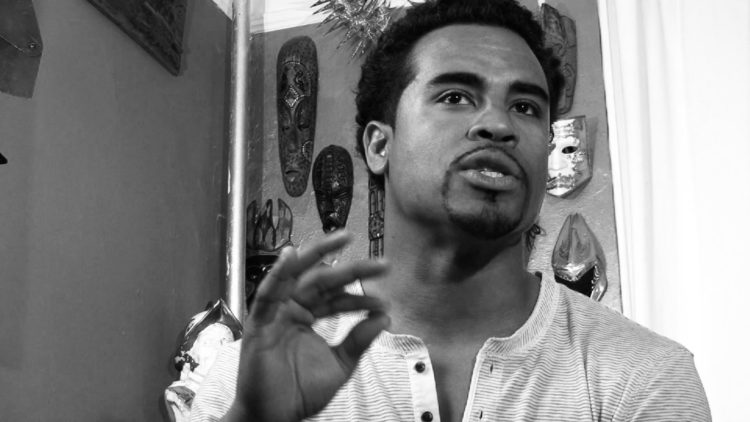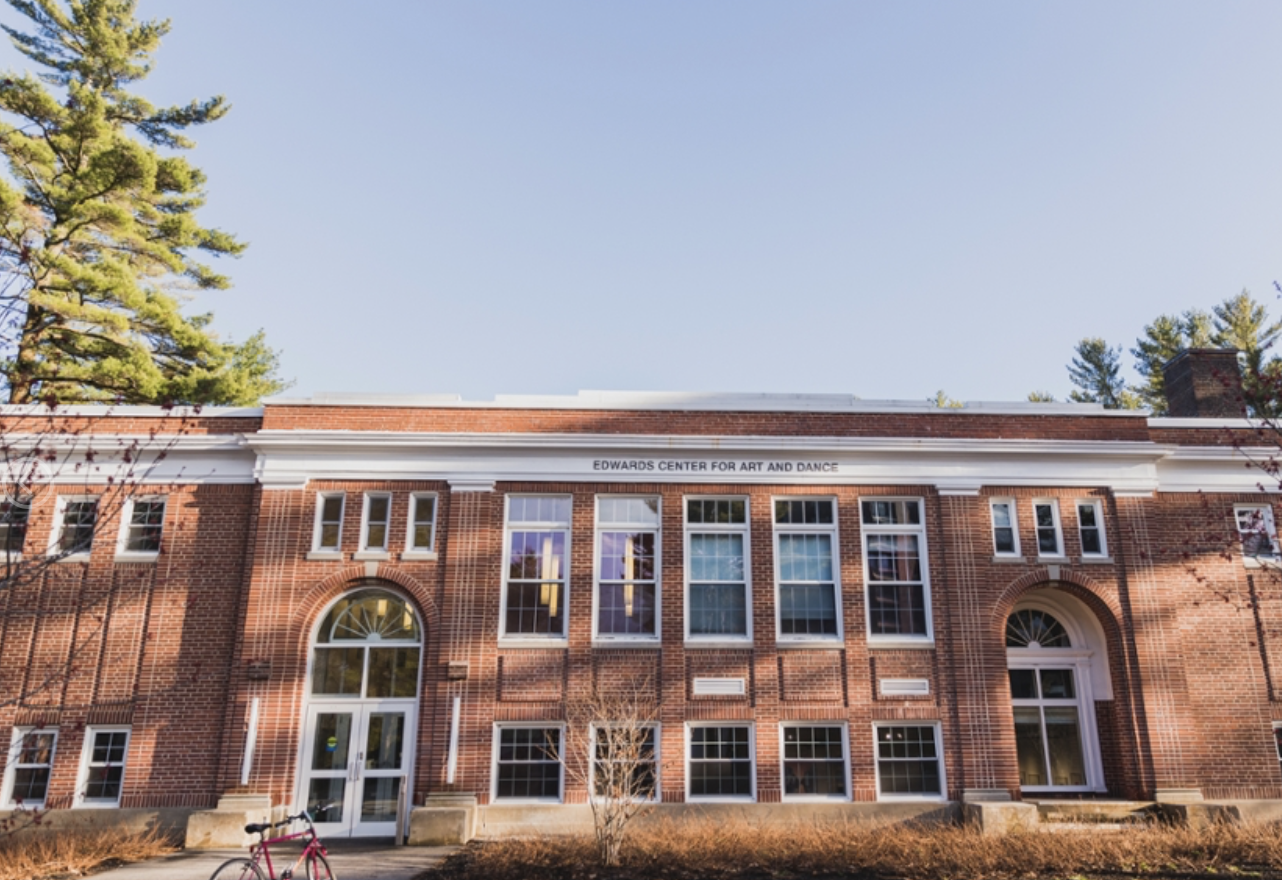Bowdoin received a great contribution to the Art History Department from Julie McGee from the 1990s until 2006. McGee was a visiting professor at Bowdoin, and she taught a total of twelve courses that centered Blackness and the various contributions of Black artists across mediums in art. Julie McGee was Dr. David Driskell’s biographer and worked closely with him and his study of African and African American art, along with his practice as a Black artist. Although McGee is a white woman teaching these courses centered on Blackness in art, I believe her time here was greatly influenced by her relationship with Dr. Driskell. After Driskell’s passing in April of 2020, The Bowdoin Orient constructed an article remembering his life and contributions. McGee says in an interview with The Orient, “David Driskell loved Bowdoin and we shared this passion,” she wrote. “He championed my endeavors to provide African American and African diasporic art history courses there.”[1]
I believe Dr. Driskell and McGee had an understanding that these courses were not being offered at Bowdoin, and hadn’t been before they introduced them to the Art department. I argue that they saw the gap, that I am addressing in this history, and felt that with their expertise it would be beneficial for the Bowdoin community to engage in courses that addressed African American and African diasporic art. Visiting professors have brought the focus of Afro- and African American art to Bowdoin in coursework and exhibitions. When those visiting professors leave, the focus on the Black narrative leaves with them. I argue that Bowdoin as an institution hasn’t held themselves accountable for continuing these courses and having them become embedded into the curriculum.
“If I’m going to be straight up with you, there was probably like this underlying, attitude… I had this underlying attitude of discomfort, if not insult, that all of the artists that were being projected to me as important were white.”
– Shaun Leonardo ’01

Shaun Leonardo graduated from Bowdoin College in 2001 under the Visual Arts Department. He received his MFA from the San Francisco Art Institute and is now creating art from Brooklyn, New York. “Shaun Leonardo’s multidisciplinary work negotiates societal expectations of manhood, namely definitions surrounding black and brown masculinities, along with its notions of achievement, collective identity, and experience of failure.” [2]
“But in order to seek representation, I had to look outside of the Visual Arts Department. and so much of what as much of what I ended up receiving was in the History, Anthropology, Social Studies areas. And at the time, there were two, I’m not going to remember their names. I know one, Dr. Stones, Stones, neither of them are there anymore. But there was a very strong Caribbean studies component that seemed to be fleeting, it seemed to just be by chance that it was anchored or that it was there in the Sociology/ History Department. And I found myself gravitating to those kind of courses, because there was such a lack of representation and range in the Art History area…”
Instruction:
Watch the video below for the full excerpt from Shaun Leonardo, where he discusses representation within the department and his relationship with Julie McGee.
[ensemblevideo version=”5.6.0″ content_type=”video” id=”42b8aafc-545a-4b34-8240-f871cd093e79″ width=”640″ height=”360″ displaytitle=”true” autoplay=”false” showcaptions=”false” hidecontrols=”true” displaysharing=”false” displaycaptionsearch=”true” displayattachments=”true” audiopreviewimage=”true” isaudio=”false” displaylinks=”true” displaymetadata=”false” displaydateproduced=”true” displayembedcode=”false” displaydownloadicon=”false” displayviewersreport=”false” embedasthumbnail=”false” displayaxdxs=”false” embedtype=”responsive” forceembedtype=”false” name=”Shaun Leonardo on Julie McGee”]
Visiting professors have brought the focus of Afro- and African American art to Bowdoin, in coursework and exhibitions. When those visiting professors leave, the focus on Black narrative leaves with them. I argue that Bowdoin as an institution hasn’t held themselves accountable for continuing these courses and having them become embedded into the curriculum. It had been the job of visiting professors and select faculty members and curators to do this work on their own. This is evident today because, since 1950, twenty-two total exhibitions have been focused on African and African American art, including a digital exhibition and a video in the Media Gallery. On the Bowdoin College Museum of Art website, from 2018 to 2019 the museum held 10 total exhibitions that year. If the museum holds around 15 exhibitions every year, that makes the difference twenty-two exhibitions out of around 700 total since 1950. There is a clear gap in exhibitions that have focused on African or African American art since 1950. The lack of focus on African and African American art is embedded into Bowdoin’s history, as I saw through accounting, this history, and it’s still an issue that the institution faces today.

In 2011, The Longfellow Elementary school was purchased and named after Robert H. and Blythe Bickle Edwards. Classes began in Edwards on September 5, 2013 and most of my personal experience in visual arts courses has been in the Edwards Center. After the division of the Art Department in 1975, both the Art History Department and Visual Arts Department still held most of their courses in the VAC. With limited studio space, the work that visual arts students could do was minimal. Edwards provides a workspace for studio courses and dance studios. For Visual Arts students, it allowed them to have their own classrooms with designated individual workspaces, a dark room, wood shop, digital media lab, and printmaking studio. This building was important to the growth of the students within the department and left room for the Visual Arts Department to grow.
Although Edwards gave students a physical space to grow and expand on their techniques in their own environments, the Visual Arts Department still struggles with accommodating the success of all of their students. Success as I describe here lies within how one feels affirmed culturally and socially within the department, relating to Gloria Ladson-Billings Criteria in CRT.
“A next step for posing effective pedagogical practice is a theoretical model that not only addresses student achievement but also helps students to accept and affirm their cultural identity while developing critical perspectives that challenge inequities that schools (and other institutions) perpetuate.”[3]
-Gloria Ladson Billings, Toward a Theory of Culturally Relevant Pedagogy
The next section will provide you with the opportunity to read and listen to oral histories that I conducted with Black alumni who have navigated the Visual Arts Department. Please click on the link below to view the next section, titled The Black Alumni Perspective.
[1] Ago, K., Ago, L., Kate Lusignan • February 18, 2., Lyle Altschul • February 19, 2., Ago, A., Jack Swartzentruber • April 10, 2., . . . Elizabeth Flanagan • April 3, 2. (2020, April 10). In memory of David driskell H’89: From the Pines Of FALMOUTH, and beyond. Retrieved March 19, 2021, from https://bowdoinorient.com/2020/04/10/in-memory-of-david-driskell-h89-from-the-pines-of-falmouth-and-beyond/
[2] Sanchez, Isaiah Marc. “Biography.” Accessed April 27, 2021. https://elcleonardo.com/bio.
[3] Ladson-Billings, Gloria. “Toward a Theory of Culturally Relevant Pedagogy.” American Educational Research Journal32, no. 3 (1995): 465–91. https://doi.org/10.3102/00028312032003465.